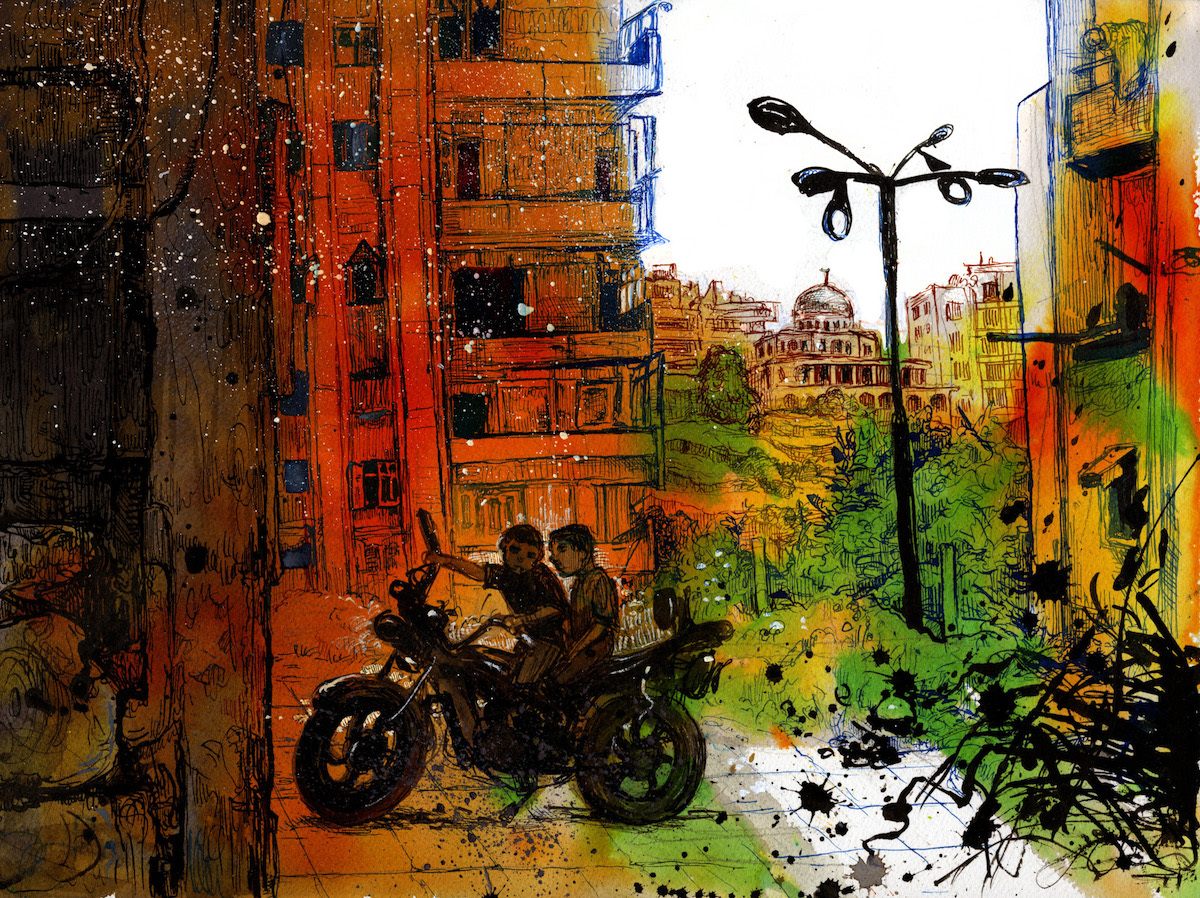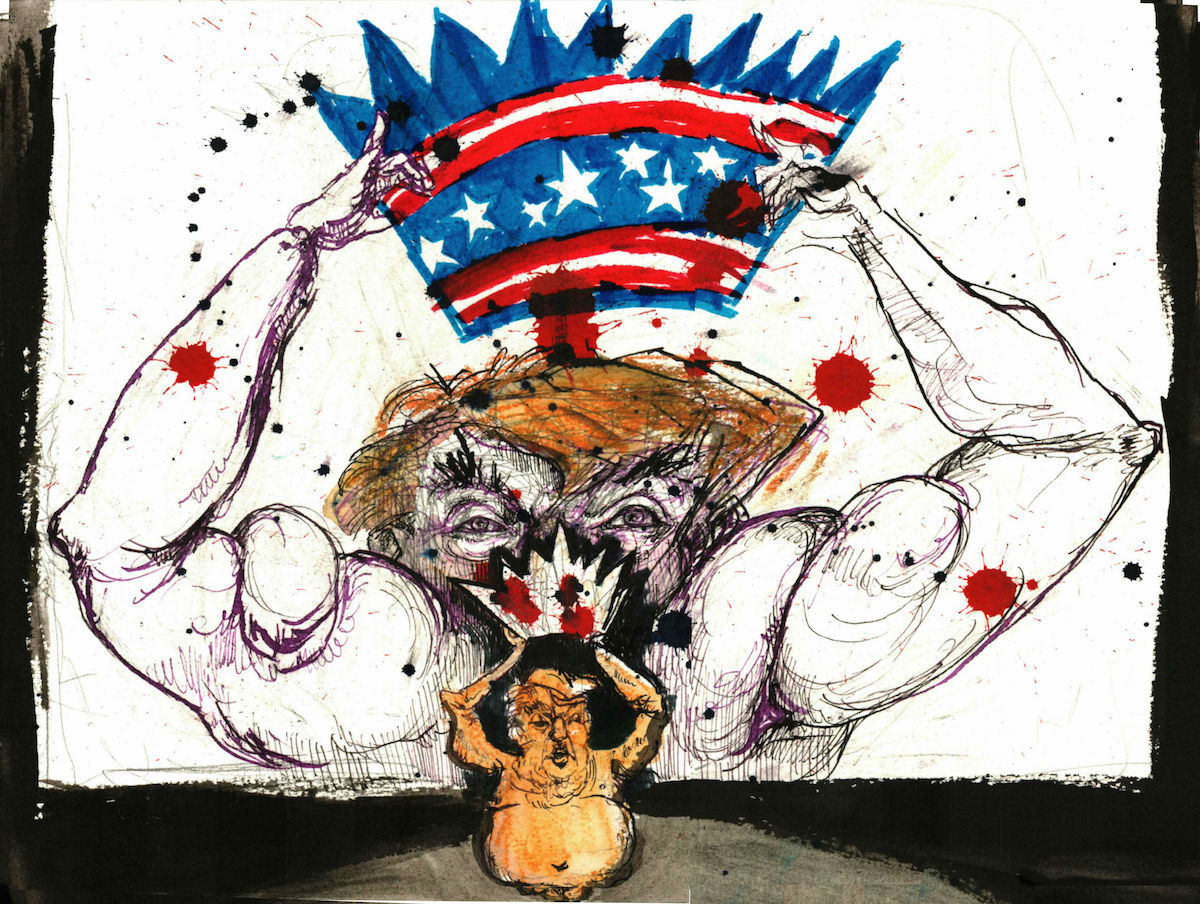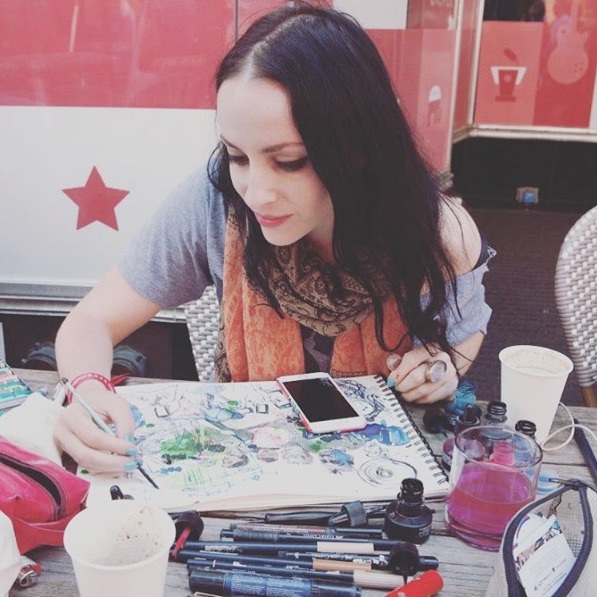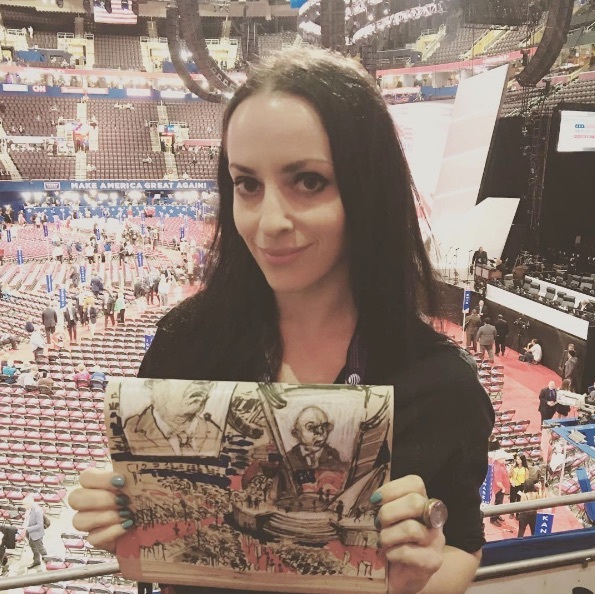It was during the Occupy Wall Street protests in 2011 that Molly Crabapple realised she could use her art as a form of communication or protest and consequently her powerful brand of illustrated journalism was born. Much of her work since has been made in response to world events, cleverly critiquing or satirising situations we all grapple with. From Guantanamo Bay, migrant workers in Abu Dhabi, the US prison system and the Syrian civil war, Molly’s work continues to bravely shine a spotlight on social injustices. As a young person with the capacity to cleverly articulate the ideas important to much of her generation, Molly is also a writer who’s penned a memoir and contributes to publications like the New York Times, Vanity Fair and Vice.
With a couple of Australian appearances and talks, including the Melbourne Writers Festival and the Festival of Dangerous Ideas, lined up in September, we spoke to Molly about her work and how today’s news will be viewed through history.
i-D: Can we start by asking what you’ve been up to recently?
Molly Crabapple: I’ve just returned from Istanbul. I’m working on a book and the co-author, Marwan Hisham, lives there. I’ve been commuting there for a while.
You’re working on a book about the Syrian war right?
Yes. We’re doing a book for Random House now about life under the ISIS occupation. I worked with Marwan on a number of pieces for Vanity Fair in the lead up. He is Syrian and when ISIS invaded his home town, Raqqa, he stayed for two years. While he was there he risked his life being a journalist. He’s also an extraordinary writer. For our collaborations he’d send me photos of life in Raqqa, Mosul and rebel-held Eastern Aleppo and I’d draw them.

As a journalist I wanted to ask you about your thoughts on the media and the implications of everyone trying to keep up with ever-faster news cycles.
I don’t necessarily think it’s always the media’s fault, everyone’s just trying to their job. I think we’re just at a point where the limit of information that anyone can take in has been reached. I don’t think our brains are meant to see every misery and horror that’s going on in the world, all at once. I think we’re going to have to think of fundamentally different ways around how we’re going to deal with information.
It is so different now. When I got first went online, it was the place where nerdy people like me sort of won. I remember it nostalgically. The on and offline worlds are effectively the same now. I think the internet creates self-reinforcing communities, it will reinforce what you’re into.
It’s given everyone a voice.
I truly think that if it wasn’t for social media, important movements like Black Lives Matter may not have been so effective. It allows public events like the Ferguson protests to be amplified to the extent that the media can’t ignore them. That said, I also credit the community around Trump to social media. It creates these self-reinforcing bubbles. It’s one of its beautiful strengths and one of its horrifying weaknesses.

You’re here for the Melbourne Writers Festival and the Festival of Dangerous ideas. What will you be discussing?
I’ve been doing this illustrated journalism about conflict and protest for a number of years so I wanted to speak about taking artwork outside of the white, exclusionary gallery and out onto the street, into the world using art to chronicle life, war or anything…breaking the paradigm. I’ll be speaking about the work of my idols too.
It feels like everyone is holding their breath to see what happens with the US election in November. You spent some time at the Republican convention drawing, what are your thoughts?
I really hope our country doesn’t fall into orange fascism. I think that the era of old style politicians is over, not just in America but around the world and a fascist like Trump has been able to take advantage of it. One of the things I’m concerned about is the increase in a kind of tribalism or nationalism and the idea that only the people in your group deserve to have rights. We’re seeing this all over the world and it’s horrifying.

What do you do for a break from your political work?
I’m actually working on a show along these lines at the moment which opens in September in New York. I called it Annotated Muses. Basically I admire and miss my friends a lot so I got them all to give me things like love letters and eviction notices and baby scans. I drew giant portraits on those and then got my friends to intervene with the work and draw over my work. It’s like an eight foot high ode to my favourite people.

Credits
Text Briony Wright
